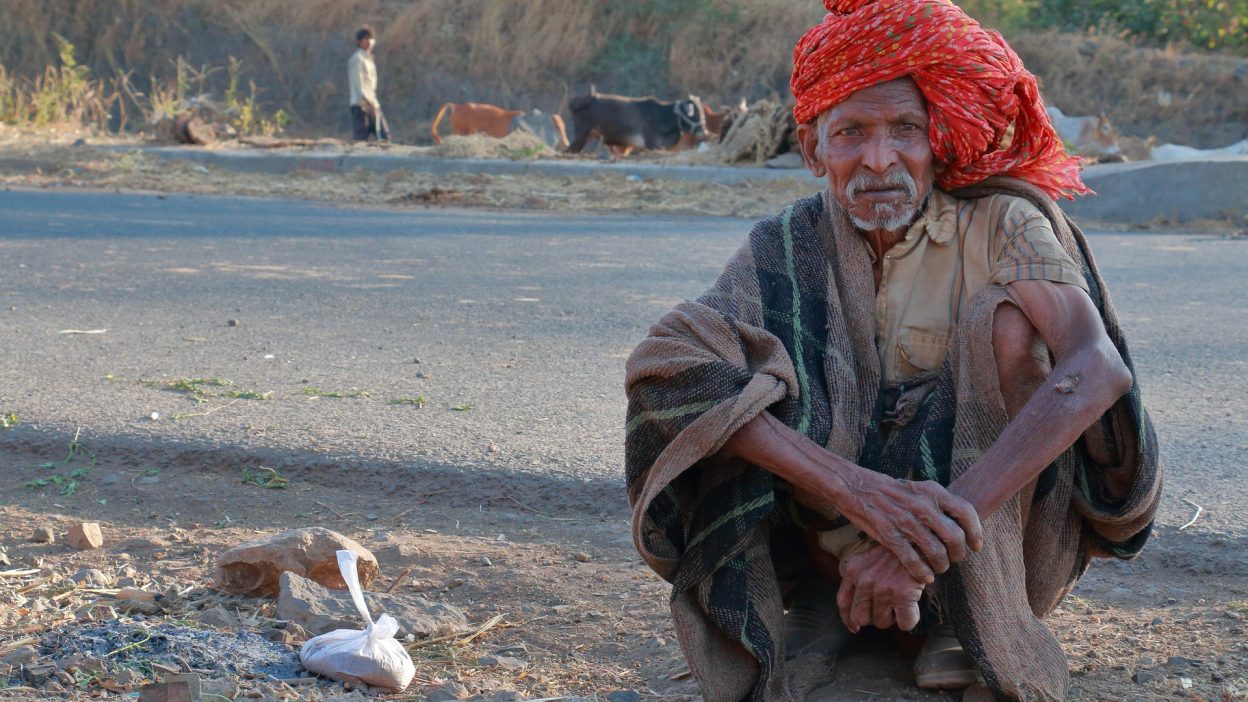Unseen Consequences And Government Failure In The Face Of Nature’s Fury
1. The 1996 Andhra Pradesh Cyclone: A Storm That Shattered Communities and Livelihoods
The 1996 Andhra Pradesh Cyclone stands as one of the most catastrophic natural disasters to hit the Indian state of Andhra Pradesh. The storm struck on November 18th, bringing ferocious winds and heavy rainfall that caused extensive damage. As the cyclone moved inland, its intensity increased, devastating coastal regions of Andhra Pradesh and displacing millions of people. Villages were submerged, homes destroyed, and agricultural lands lost. The survivors were left with basic necessities like food, water, and shelter in short supply.
Beyond the immediate destruction, the storm had lasting economic consequences, particularly in the agricultural and fishing sectors, where people’s livelihoods were destroyed. Many families were forced to rebuild their lives from scratch, and the effects of the disaster lingered for years. This event was a clear reminder of nature’s power and the vulnerabilities of communities living in high-risk areas.
2. How the 1996 Andhra Pradesh Cyclone Sparked Chaos and Ruin
The cyclone’s arrival was swift and powerful, catching many off guard. With wind speeds reaching up to 190 km/h, the storm wreaked havoc on coastal infrastructure. Fishermen lost boats and homes, while extensive flooding wiped out agricultural crops. As the storm made landfall, panic spread as people rushed to find shelter. The storm’s winds toppled trees, power lines, and transportation systems, cutting off affected areas from assistance.
The aftermath saw continued flooding that trapped people in submerged areas for days. The lack of clean water led to outbreaks of waterborne diseases. With roads and communication lines damaged, rescue operations were delayed, making it harder to reach people in need. The chaotic aftermath of the cyclone underscored the critical need for better infrastructure and disaster preparedness.
3. The Human Toll of the 1996 Andhra Pradesh Cyclone: Casualties and Shocking Statistics
- Death Toll: Over 1,000 lives were lost in the 1996 Andhra Pradesh Cyclone. Many deaths were attributed to drowning and collapsed buildings, with the coastal regions bearing the brunt of the storm’s fury.
- Injuries: Thousands were injured, suffering from broken bones, head injuries, and wounds caused by flying debris. The severity of injuries was worsened by the delayed medical response due to damaged infrastructure.
- Displacement: Nearly 1.5 million people were forced from their homes, living in temporary shelters for weeks. Many villages were completely destroyed, and survivors had to rebuild their homes from scratch.
- Economic Damage: The cyclone’s economic impact was massive, with losses exceeding ₹20,000 crores (around £2.5 billion). The agricultural sector was particularly affected, with crops being destroyed and farmers losing their livelihood.
- Government Response: The Indian government’s initial response was criticized for its slowness, though emergency relief eventually reached affected areas, providing food, water, and medical supplies.
4. Was the 1996 Andhra Pradesh Cyclone India’s Worst Natural Disaster?
While the 1996 Andhra Pradesh Cyclone was one of the most destructive storms in India’s history, it is often overshadowed by other major natural disasters. However, its impact on the coastal region was immense, as it caused both substantial loss of life and long-term economic hardship. The storm’s devastation marked a turning point in India’s approach to disaster management and highlighted the need for stronger preparedness in vulnerable areas.
When compared to other major disasters such as the 2004 Indian Ocean tsunami or the 1977 Bihar floods, the Andhra Pradesh Cyclone is often remembered for its massive disruption of local economies and communities. It served as a wake-up call for improving disaster response strategies to ensure fewer lives were lost in future storms.
5. The 1996 Andhra Pradesh Cyclone: A Catalyst for Change in India’s Disaster Management Systems
The 1996 Andhra Pradesh Cyclone prompted a reevaluation of India’s disaster management capabilities. The initial response to the cyclone was criticized for being inadequate, leading to many preventable deaths. The event exposed critical gaps in infrastructure and disaster preparedness, especially in coastal areas, where cyclones were a recurring threat.
In the aftermath of the cyclone, India took significant steps to enhance its disaster management systems. The formation of the National Disaster Management Authority (NDMA) marked a key development in the country’s ability to respond to such calamities. These improvements, including advancements in weather forecasting and early warning systems, were crucial in mitigating the impact of future storms. However, the lessons learned from the 1996 disaster have highlighted the need for continued vigilance and preparedness.
6. The Political Consequences: How India’s Response to the Andhra Pradesh Cyclone Led to National Criticism
The political fallout from the 1996 Andhra Pradesh Cyclone was substantial. Many political leaders were criticized for their delayed responses to the disaster. Although warnings were issued before the storm, they were not communicated effectively to the public. This lack of timely information contributed to the scale of the damage, as many people were unprepared for the storm’s full force.
In the aftermath, the slow and disorganized relief operations exacerbated the situation, leading to public outcry. Many people felt abandoned by the political system during the crisis. The disaster sparked a broader discussion on the need for better coordination, faster response times, and more accountability from the government during natural calamities. It underscored the importance of leadership in times of crisis.
7. The Role of Climate Change in Intensifying the 1996 Andhra Pradesh Cyclone
- Rising Sea Temperatures: Warmer sea temperatures in the Bay of Bengal played a significant role in the cyclone’s severity. Higher temperatures provide more energy to cyclones, enabling them to develop more rapidly and intensify more quickly.
- Altered Weather Patterns: Experts point to climate change as a factor in the increased frequency and intensity of storms. Cyclones like the one that hit Andhra Pradesh are becoming more intense due to shifting global weather patterns caused by global warming.
- Storm Surges and Flooding: Rising sea levels, a direct consequence of climate change, amplified the storm surge and flooding caused by the cyclone. Coastal regions like Andhra Pradesh are highly vulnerable to these surges, which can cause more extensive damage than the wind itself.
8. The 1996 Andhra Pradesh Cyclone: The Challenging Path to Recovery
Recovery from the 1996 Andhra Pradesh Cyclone was a slow and difficult process. The immediate relief efforts, though necessary, were not enough to deal with the full extent of the damage. Many areas remained isolated for days, while infrastructure damage made it harder for relief to reach affected communities. People had to live in makeshift shelters, and essential resources such as clean drinking water were scarce.
Rebuilding homes and infrastructure took years, with many people in rural areas struggling to return to normal life. The agricultural and fishing industries, which were integral to the local economy, took significant time to recover. Despite the challenges, the resilience of the people of Andhra Pradesh shone through. They worked tirelessly to rebuild their homes and restore their communities. The experience shaped future disaster response strategies in India, reinforcing the need for comprehensive planning.
9. Conclusion: The Enduring Impact of the 1996 Andhra Pradesh Cyclone and the Need for Continued Reform
The legacy of the 1996 Andhra Pradesh Cyclone continues to influence India’s approach to disaster preparedness. While the immediate response was criticized, the long-term effects of the storm led to substantial reforms in the country’s disaster management systems. The cyclone served as a grim reminder of the power of nature and the need for improved infrastructure, early warning systems, and quicker relief operations.
In light of increasing climate risks, it’s crucial that India maintains its commitment to disaster preparedness. The lessons learned from the Andhra Pradesh Cyclone remain relevant today, as the country faces the growing threat of more frequent and severe natural disasters. The government and communities must stay vigilant to ensure that future cyclones are met with a well-coordinated response that minimises loss of life and damage.
5 Short FAQs:
- What was the death toll in the 1996 Andhra Pradesh Cyclone?
The cyclone resulted in the loss of over 1,000 lives, mainly due to drowning and collapsing structures. - What impact did the 1996 Andhra Pradesh Cyclone have on the region?
It caused widespread destruction, flooded coastal areas, and devastated livelihoods, particularly in farming and fishing. - Could the 1996 Andhra Pradesh Cyclone have been avoided?
While the cyclone was inevitable, better preparation and early warnings could have reduced the damage and saved lives. - How did the Indian government handle the cyclone’s aftermath?
The initial response was slow, but relief efforts eventually provided much-needed aid to affected communities. - What were the key lessons from the 1996 Andhra Pradesh Cyclone?
The disaster highlighted the need for faster responses, better infrastructure, and improved disaster management systems.
Reference:
1996 Andhra Pradesh cyclone
India: Cyclone IFRC situation report no. 2
1996 Cyclone Andhra Pradesh, India
Evolution of Disaster Management System in India with Special Reference to Cyclones




